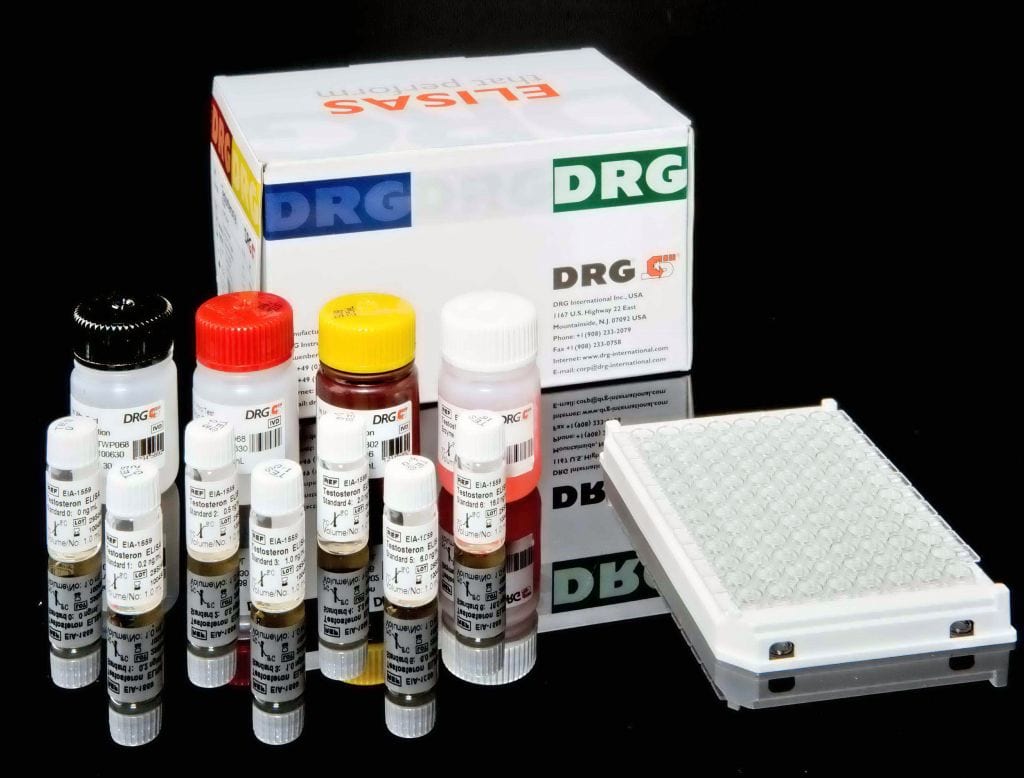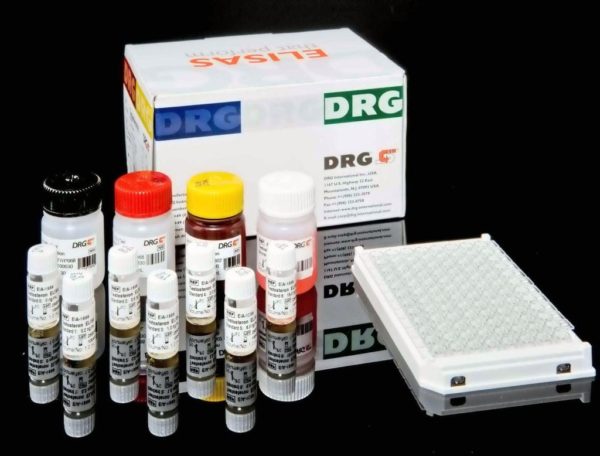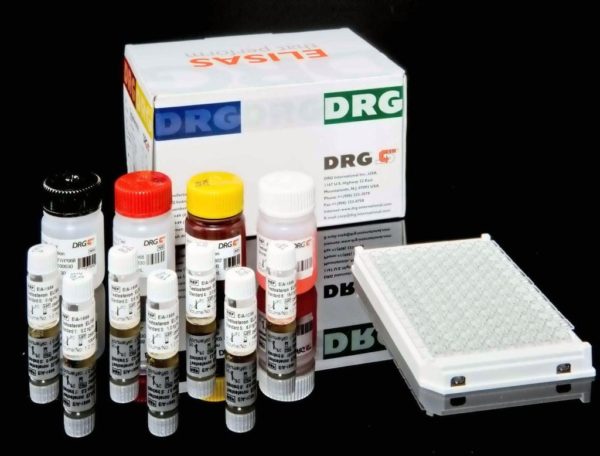Description
Competitive immunoenzymatic colorimetric method for quantitative determination of total estriol concentration in human serum or plasma.
Total Estriol ELISA is intended for laboratory use only.Estriol (also oestriol) is one of the three main estrogens produced by the human body. It is only produced in significant amounts during pregnancy as it is made by the fetus. During pregnancy the production of estriol depends on an intact maternal-placental-fetal unit. Fetal-placental production of estriol leads to a progressive rise in maternal circulating levels reaching a late-gestational peak several orders of magnitude greater than non-pregnant levels. In the maternal circulation, estriol undergoes rapid conjugation in the liver followed by urinary excretion with a half-life of ~20 minutes. Since normal estriol production depends on an intact maternal-placental-fetal circulation and functional fetal metabolism, maternal estriol levels have been used to monitor fetal status during pregnancy, particularly during the third trimester. DHEA is produced by the adrenal cortex of the fetus, this is converted to estriol by the placenta. If levels are abnormally low in a pregnant woman, this may indicate a problem with the development in the child. Levels of estriol in non-pregnant women do not change much after menopause, and levels are not significantly different from levels in men.
Total Estriol (antigen) in the sample competes with the antigenic estriol conjugated with horseradish peroxidase (HRP) for binding to the limited number of antibodies anti estriol coated on the microplate (solid phase). After incubation, the bound/free separation is performed by a simple solid-phase washing. Then the enzyme HRP in the bound-fraction reacts with the Substrate (H2O2) and the TMB Substrate and develops a blue color that changes into yellow when the Stop Solution (H2SO4) is added. The colour intensity is inversely proportional to the total estriol concentration in the sample. Total Estriol concentration in the sample is calculated based on a series of standards.




